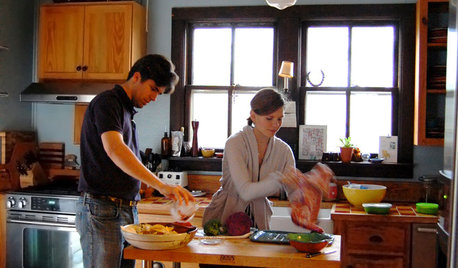Asparagus and Strawberries
very_blessed_mom
16 years ago
Related Stories

SPRING GARDENINGSummer Crops: How to Grow Strawberries
Pluck your own sweet strawberries right from the garden vine for smoothies, salads or eating then and there
Full Story
FARM YOUR YARDHouzz Call: Home Farmers, Show Us Your Edible Gardens
We want to see where your tomatoes, summer squashes and beautiful berries are growing this summer
Full Story
GARDENING FOR BUTTERFLIESGardening for the Bees, and Why It’s a Good Thing
When you discover how hard bees work for our food supply, you may never garden without them in mind again
Full Story
GARDENING GUIDES10 Easy Edibles for First-Time Gardeners
Focus on these beginner-friendly vegetables, herbs, beans and salad greens to start a home farm with little fuss
Full Story
GARDENING AND LANDSCAPINGWorld of Design: 10 Home Gardeners Show Us Their Sweet Summer Harvests
From New York to Tokyo, these gardeners have turned their yards, terraces and rooftops into places of bounty
Full Story
KITCHEN DESIGNKitchen Recipes: Secret Ingredients of 5 One-of-a-Kind Cooking Spaces
Learn what went into these cooks’ kitchens — and what comes out of them
Full Story
CURB APPEAL10 Ways to Dress Up the Stoop
Create entryway appeal even in a pint-size area by decorating with plants, paint, rugs and more
Full Story
ENTERTAINING8 Stress-Busting Tips for Hosting Small Gatherings
Make entertaining easy with these ideas for casual get-togethers
Full Story
HOLIDAYSMake Your Checklist for Entertaining Season
Tailor this master list to help you set the scene — and table — for the holidays
Full Story
EDIBLE GARDENSHow to Add an Apple Tree to Your Edible Garden
Readily available, beautiful and fragrant, apple trees offer four-season interest along with crisp, juicy fruit
Full StorySponsored
More Discussions







laura_lea60
Okiedawn OK Zone 7
Related Professionals
Carson Landscape Architects & Landscape Designers · Hershey Landscape Architects & Landscape Designers · Montgomeryville Landscape Architects & Landscape Designers · Bellefontaine Neighbors Landscape Contractors · Berkley Landscape Contractors · Clearlake Landscape Contractors · Dedham Landscape Contractors · Fort Hunt Landscape Contractors · Fuquay-Varina Landscape Contractors · Holtsville Landscape Contractors · Middletown Landscape Contractors · Sun Valley Landscape Contractors · Hawaiian Gardens Landscape Contractors · Hayward Decks, Patios & Outdoor Enclosures · Kansas City Decks, Patios & Outdoor Enclosuresmulberryknob
very_blessed_momOriginal Author
Okiedawn OK Zone 7
mulberryknob
sagenscotties
chickencoupe
AmyinOwasso/zone 6b
chickencoupe
soonergrandmom
chickencoupe